“Busy breeding” | 5th project update on the NW Australia satellite tagged Whimbrels
Below the latest news on the AWSG Whimbrel project edited by Katherine Leung, to follow on Facebook at https://www.facebook.com/AWSG.sat.tag/?ref=aymt_homepage_panel#
Busy breeding
It has been quite a while since our last updates and we are delighted to see that both KS and KU have reached their breeding sites!
KS and KU have chosen different area to nest and their nesting area are approximately 630km apart from each other in the Sakha Republic, Russia.
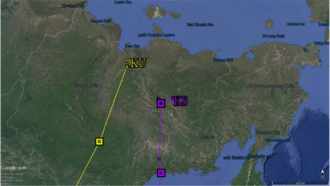
Breeding location of KS and KU in Sakha Republic, Russia. AWSG Satellite Transmitter Project, ©Katherine Leung, 20 June 2017.
KS reached the west of Momskiy Mountains in the last week of May. After spending two days there to replenish, it flew 157km east across the 2000m mountains to reach its nesting location.
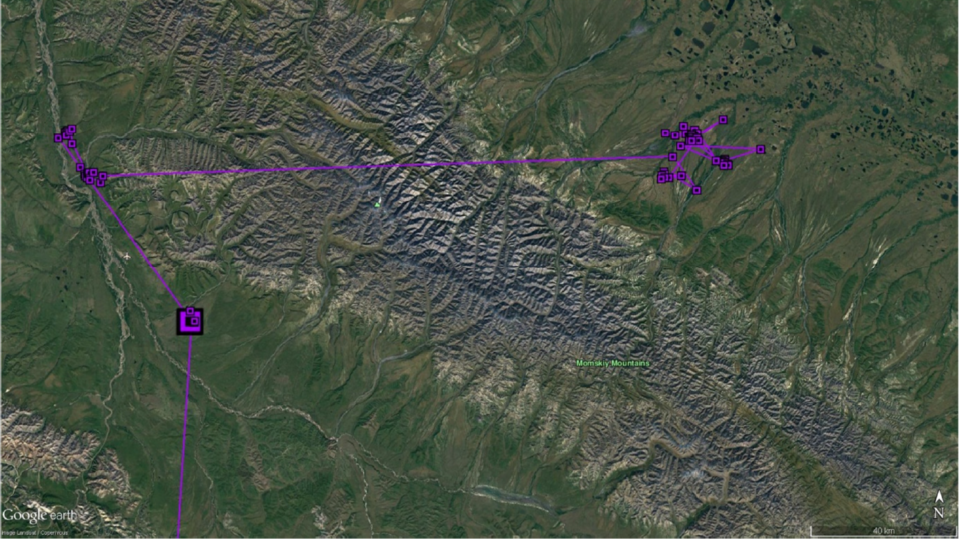
KS flew across Momskiy Mountains. AWSG Satellite Transmitter Project, ©Katherine Leung, 20 June 2017.
Within a few days after arrival, KS has decided its nesting area. The movement of KS in its first week of arrival was quite extensive, covering up to an area of 500km2. Moving on to the second week, movement significantly shrunk to less than 100km2. Movement further limited to a 5km x 5km area in the third week indicating that KS is highly likely nesting.

Movement of KS around nesting location: Week 1: 30-May to 5-Jun. AWSG Satellite Transmitter Project, ©Katherine Leung, 20 June 2017.
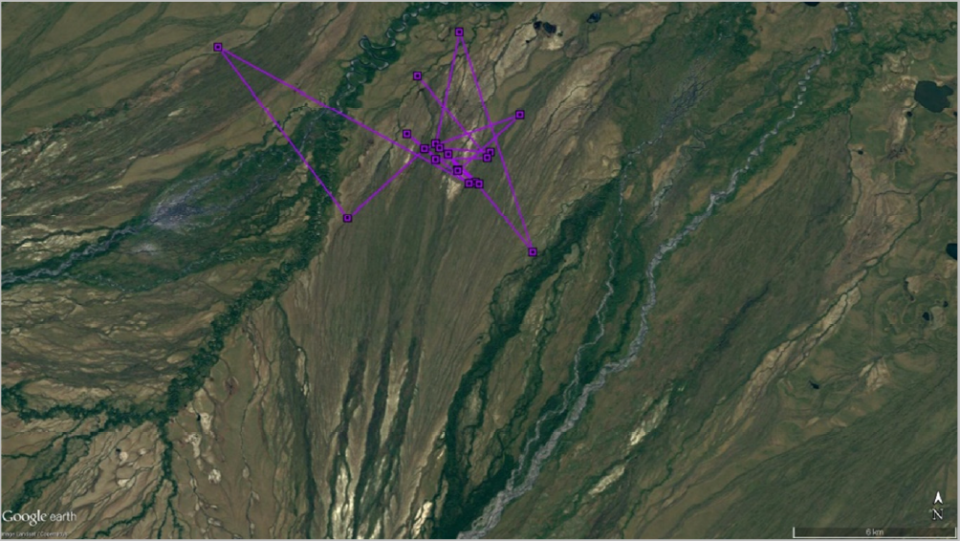
Movement of KS around nesting location: Week 2: 6-Jun to 12-Jun. AWSG Satellite Transmitter Project, ©Katherine Leung, 20 June 2017.
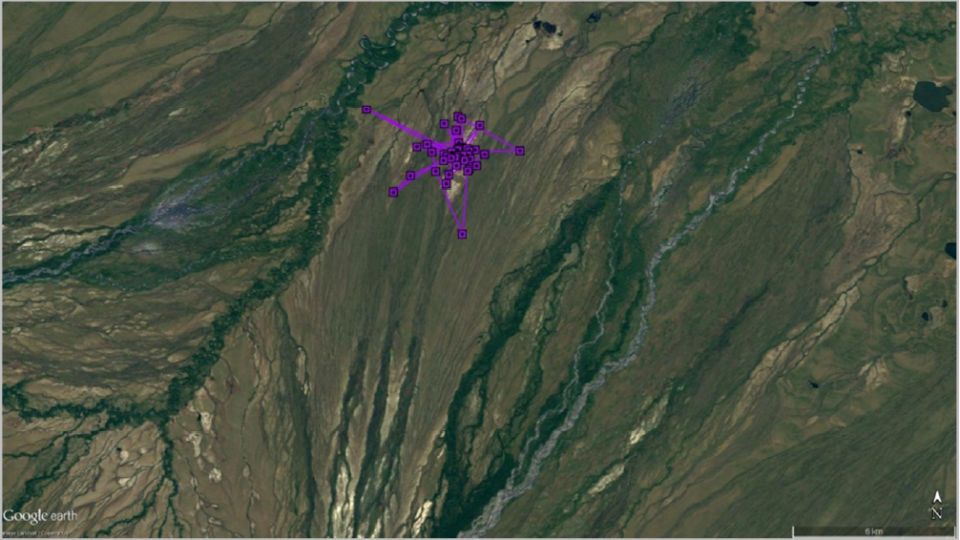
Movement of KS around nesting location: Week 3: 13-Jun to 19-Jun. AWSG Satellite Transmitter Project, ©Katherine Leung, 20 June 2017.
KU also arrived at its potential breeding area in late May. However, it then spent over 1.5 weeks exploring the area on both sides of a mountain before it finally decided its nesting area 17km north of the mountain, 27km west to River Yana.
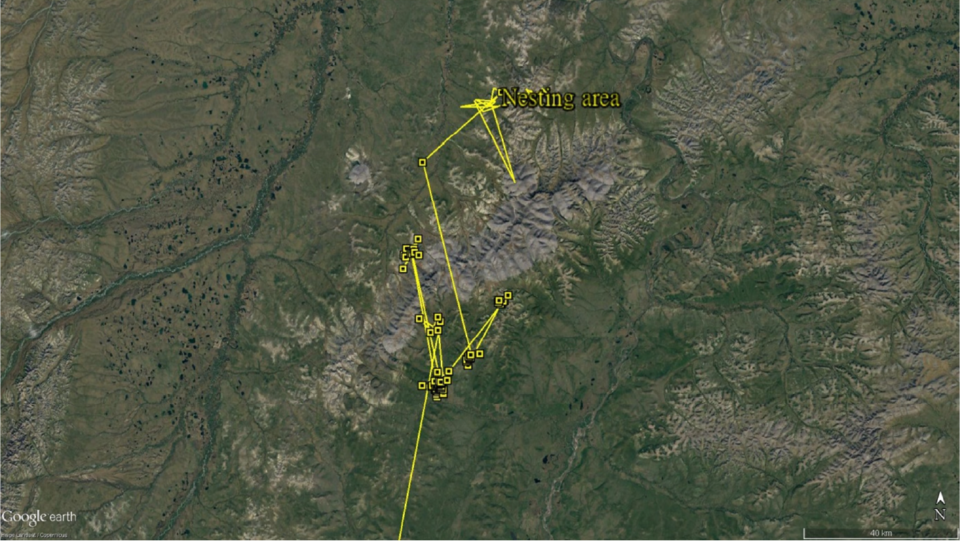
KU exploring its breeding area between 25-May and 5-Jun. AWSG Satellite Transmitter Project, ©Katherine Leung, 20 June 2017.
Also within a week after arrival, a significant change in area of movement is observed. In the first week, KU moved in a wider area of up to 520km2. Afterwards, it settled down in the second week within a 13km x 10km area.
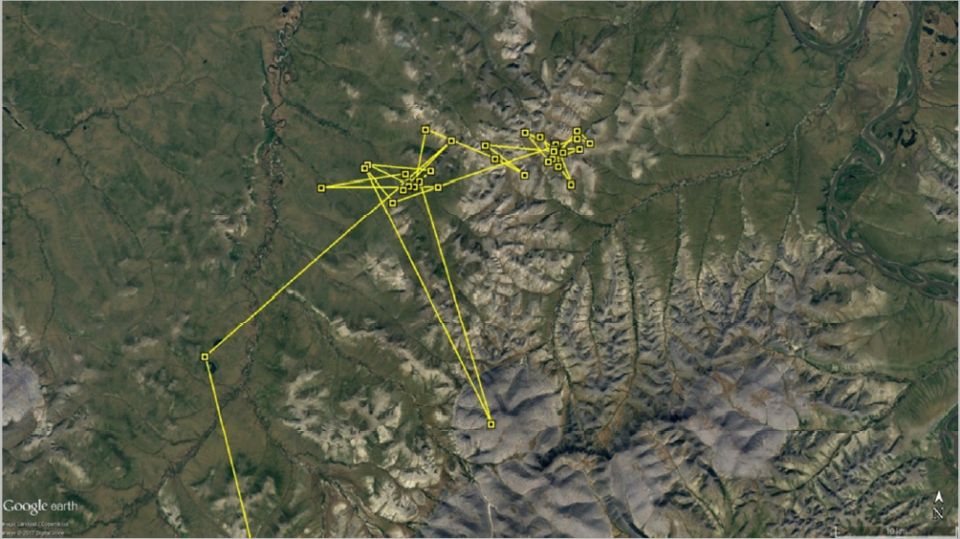
Movement of KU around nesting location: Week 1: 7-Jun to 13-Jun. AWSG Satellite Transmitter Project, ©Katherine Leung, 20 June 2017.
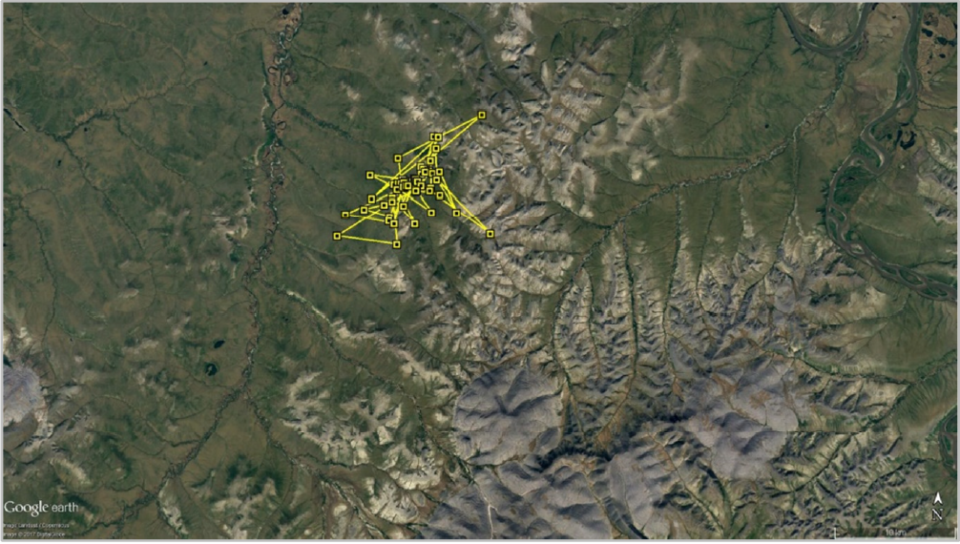
Movement of KU around nesting location: Week 2: 14-Jun to 19-Jun. AWSG Satellite Transmitter Project, ©Katherine Leung, 20 June 2017.
In the coming weeks, both KS and KU will be busy nesting and incubating their eggs. Later on their movement pattern might change again indicating fledging of their youngs. On top of KS and KU which successfully made their journey to the breeding ground, we still regularly receive signals from both LA (at Eighty Mile Beach) and JX (at Palawan, the Philippines).
As of 20 June 2017:

Migration tracks of tagged Whimbrels. AWSG Satellite Transmitter Project, ©Katherine Leung, 20 June 2017.
| Leg Flag (track colour) | No. of days since deployment | No. of days since migration started | Distance travelled |
| LA (blue) | 128 days | 0 days | 0 km |
| KS (purple) | 116 days | 65 days | 10,412 km |
| KU (yellow) | 116 days | 64 days | 9,904 km |
| JX (pink) | 87 days | 61 days | 3,049 km |
Katherine Leung
20 June 2017
Featured image: KS Whimbrel photographed in Yilan County, Taiwan on 26 April 2017, ©Lin Jer An
